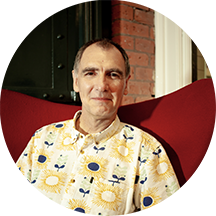Agile coaching
Ditching Taylorism: How to Unwind from the Manufacturing Mindset
10 July 2023 • 3 min read

Most large organisations’ work is based on Taylorism. This management principle was identified over 100 years ago and is based on the idea that tasks are broken down into simple steps that can be analysed, taught and repeated. Taylorism was designed to solve manufacturing problems and worked well in this space where there are simple, repetitive tasks. For innovative organisations dealing with complex adaptive problems, however, this can be disastrous. Taylorism turns workers into machines that rigorously work away rather than supporting innovation and customer collaboration. For many, the challenge is to unwind from this mindset and figure out how to start and continue making changes in the organisation.
It’s about loops
It is idealistic to think that this challenge can be undertaken without gathering data and the best way to deal with complexity is through empiricism. Put simply, this is observing reality and constantly adapting to it. There are many models available to help support doing this. These include Edwards Demming’s PDCA cycle (Plan, Do, Check and Act) or the military strategist, John Boyd’s OODA loop (Observe, Orient, Decide and Act). The similarities between these and other models jump out, however, there is a tendency to stop after the Act phase rather than iterate around the loop again.
Capability building refers to improving the skills and knowledge required to complete a task. The Department of Education (2020) estimates that 64% of organisations will use training, upskilling and hackathon days to help their people improve demonstrating that their organisations are willing to change, however, there is more to capabilities than just training. Capability, according to Smallwood & Ulrich (HBR, June 2004) is the “collective skills, abilities and expertise of an organisation” and these are the outcomes of appropriate investments, such as training, goal settings (such as OKRs), learning via pairing, innovation and offsite days or coaching and mentoring. The approach needs to be holistic rather than picking a single tool for capability development.
Where do we need to go?
Before you do anything you need to know where your capabilities are now. Without doing this you won’t know where the dial is or in which direction it is moving. The first step is to select some metrics and get measuring. Link these back to the organisation's goal and the business results you are aiming for. If you are stuck, use John Doerr's “measure what matters” approach and talk to the team about the metrics so that they are not surprised when they see them. Once some data is gathered you can plan a change around a hypothesis and how you want to move the needle. Double-check your selected measures and ensure that you have a countermeasure in place. If your measure focuses on quality your compromise is likely to be quantity. If you focus on customer acquisition your compromise may be customer retention, for example. Think about using both leading and lagging measures. Keep a lookout just in case a wrong metric has been selected.
How will we know we are getting there?
Now that you have collected some data, create a plan to move the dial. If there are concerns about the flow of work, support the team via training, coaching or mentoring. It could be that the team are focused on starting, rather than finishing work. Give team members an understanding of the benefits of finishing and demonstrate how this ties into what the business is trying to achieve, then measure again. Check the dial. If the dial is moving in the wrong direction now is the time to adapt the plan. Think PDCA or OODA loops.
Start small and be 5.3 times more successful
Research in this area by McKinsey & Company suggests that enablement is over five times more successful when the behaviour is modelled by the leadership team. The leaders should be the first participants as this helps build trust in the organisation and in the transformation itself. When leaders are open about their own continuous learning and development efforts they help set expectations for employees. Doing this will drive a bottom-up approach empowering your employees.
Capability building is about changing the way people go about doing their jobs. The changes don’t need to be complicated or require lengthy meetings. It does not matter whether the upskilling is functional or technical. What matters is that new habits are embedded or replace time-served ways of working thus allowing the organisation to break away from being trapped by Taylorism.
Sources:




.png?width=564&height=348&name=Screenshot%202025-06-10%20at%2015.03.23%20(4).png)